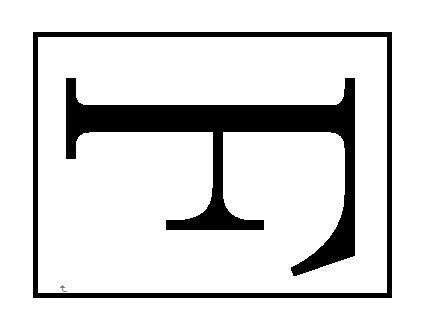You can use the auto-orient parameter to specify whether images stored in Object Storage Service (OSS) are oriented based on auto-orient configurations. This topic describes the auto-orient parameter, which is used to auto-orient images stored in OSS, and provides examples on how to auto-orient an image.
Parameters
Action: auto-orient
The following table describes the valid values of the auto-orient parameter.
Format | Description | Valid value |
[value] | Specifies whether to auto-orient the image. | 0 and 1.
|
Usage notes
If orientation parameters are not specified for the source image, the auto-orient parameter does not take effect.
Most tools can be used to auto-orient images for which orientation parameters are specified. Therefore, the images you view may be auto-oriented.
Images that are processed by using auto-orient are re-compressed, which results in size differences between the processed images and the source images.
Methods
Auto-orient public-read or public-read-write images
You can specify the auto-orient parameter in the URL of public-read or public-read-write images to auto-orient the images.
In the following examples, an image named f.jpg in the image-demo bucket in the China (Hangzhou) region is used as the source image. The image is hosted at the following URL:
https://image-demo.oss-cn-hangzhou.aliyuncs.com/f.jpg

Resize the image and retain the orientation of the image
Configure the following parameters:
Resize the image to a width of 100 pixels: resize,w_100
Disable auto-orient: auto-orient,0
The URL used to process the image: https://image-demo.oss-cn-hangzhou.aliyuncs.com/f.jpg?x-oss-process=image/resize,w_100/auto-orient,0.

Resize and auto-orient the image
Configure the following parameters:
Resize the image to a width of 100 pixels: resize,w_100
Auto-orient the image: auto-orient,1
The URL used to process the image: https://image-demo.oss-cn-hangzhou.aliyuncs.com/f.jpg?x-oss-process=image/resize,w_100/auto-orient,1.

Auto-orient private images
You can use OSS SDKs and OSS API to auto-orient private images.
Use OSS SDKs
The following sample code provides examples on how to auto-orient a private image by using OSS SDKs for common programming languages. For more information about how to auto-orient a private image by using OSS SDKs for other programming languages, see Overview.
Java
OSS SDK for Java 3.17.4 or later is required.
import com.aliyun.oss.*;
import com.aliyun.oss.common.auth.*;
import com.aliyun.oss.common.comm.SignVersion;
import com.aliyun.oss.model.GetObjectRequest;
import java.io.File;
public class Demo {
public static void main(String[] args) throws Throwable {
// In this example, the endpoint of the China (Hangzhou) region is used. Specify your actual endpoint.
String endpoint = "https://oss-cn-hangzhou.aliyuncs.com";
// Specify the region of the bucket in which the private image is stored. Example: cn-hangzhou.
String region = "cn-hangzhou";
// Obtain access credentials from environment variables. Before you run the sample code, make sure that the OSS_ACCESS_KEY_ID and OSS_ACCESS_KEY_SECRET environment variables are configured.
EnvironmentVariableCredentialsProvider credentialsProvider = CredentialsProviderFactory.newEnvironmentVariableCredentialsProvider();
// Specify the name of the bucket. Example: examplebucket.
String bucketName = "examplebucket";
// Specify the full path of the image that you want to process. Do not include the bucket name in the full path.
String objectName = "example.jpg";
// Specify the full path of the processed image. Example: D:\\dest.jpg. If an image that has the same name already exists in the path, the processed image overwrites the image. Otherwise, the processed image is saved in the path.
String pathName = "D:\\dest.jpg";
// Create an OSSClient instance.
ClientBuilderConfiguration clientBuilderConfiguration = new ClientBuilderConfiguration();
clientBuilderConfiguration.setSignatureVersion(SignVersion.V4);
OSS ossClient = OSSClientBuilder.create()
.endpoint(endpoint)
.credentialsProvider(credentialsProvider)
.clientConfiguration(clientBuilderConfiguration)
.region(region)
.build();
try {
// Resize and auto-orient the image.
String image = "image/resize,w_100/auto-orient,1";
GetObjectRequest request = new GetObjectRequest(bucketName, objectName);
request.setProcess(image);
// Set the name of the processed image to dest.jpg and save it to your local computer.
// If you specify only the name of the processed image such as dest.jpg without specifying the local path, the processed image is saved to the local path of the project to which the sample program belongs.
ossClient.getObject(request, new File("D:\\dest.jpg"));
} catch (OSSException oe) {
System.out.println("Caught an OSSException, which means your request made it to OSS, "
+ "but was rejected with an error response for some reason.");
System.out.println("Error Message:" + oe.getErrorMessage());
System.out.println("Error Code:" + oe.getErrorCode());
System.out.println("Request ID:" + oe.getRequestId());
System.out.println("Host ID:" + oe.getHostId());
} catch (ClientException ce) {
System.out.println("Caught an ClientException, which means the client encountered "
+ "a serious internal problem while trying to communicate with OSS, "
+ "such as not being able to access the network.");
System.out.println("Error Message:" + ce.getMessage());
} finally {
if (ossClient != null) {
ossClient.shutdown();
}
}
}
}PHP
OSS SDK for PHP 2.7.0 or later is required.
<?php
if (is_file(__DIR__ . '/../autoload.php')) {
require_once __DIR__ . '/../autoload.php';
}
if (is_file(__DIR__ . '/../vendor/autoload.php')) {
require_once __DIR__ . '/../vendor/autoload.php';
}
use OSS\Credentials\EnvironmentVariableCredentialsProvider;
use OSS\OssClient;
// Obtain access credentials from environment variables. Before you run the sample code, make sure that the OSS_ACCESS_KEY_ID and OSS_ACCESS_KEY_SECRET environment variables are configured.
$provider = new EnvironmentVariableCredentialsProvider();
// Specify the endpoint of the region in which the bucket is located. For example, if the bucket is located in the China (Hangzhou) region, set the endpoint to https://oss-cn-hangzhou.aliyuncs.com.
$endpoint = "https://oss-cn-hangzhou.aliyuncs.com";
// Specify the name of the bucket. Example: examplebucket.
$bucket= "examplebucket";
// Specify the full path of the image that you want to process. Do not include the bucket name in the full path.
$object = "example.jpg";
// Specify the full path of the processed image. Example: D:\\dest.jpg. If an image that has the same name already exists in the path, the processed image overwrites the image. Otherwise, the processed image is saved in the path.
// If you specify only the name of the processed image such as dest.jpg without specifying the local path, the processed image is saved to the local path of the project to which the sample program belongs.
$download_file = "D:\\dest.jpg";
$config = array(
"provider" => $provider,
"endpoint" => $endpoint,
"signatureVersion" => OssClient::OSS_SIGNATURE_VERSION_V4,
// Specify the ID of the Alibaba Cloud region in which the bucket is located.
"region" => "cn-hangzhou"
);
$ossClient = new OssClient($config);
// Resize and auto-orient the image.
$image = "image/resize,w_100/auto-orient,1";
$options = array(
OssClient::OSS_FILE_DOWNLOAD => $download_file,
OssClient::OSS_PROCESS => $image);
// Save the processed image to your local computer.
$ossClient->getObject($bucket, $object, $options); Python
OSS SDK for Python 2.18.4 or later is required.
# -*- coding: utf-8 -*-
import oss2
from oss2.credentials import EnvironmentVariableCredentialsProvider
# Obtain access credentials from environment variables. Before you run the sample code, make sure that the OSS_ACCESS_KEY_ID and OSS_ACCESS_KEY_SECRET environment variables are configured.
auth = oss2.ProviderAuthV4(EnvironmentVariableCredentialsProvider())
# Specify the endpoint of the region in which the bucket is located. For example, if the bucket is located in the China (Hangzhou) region, set the endpoint to https://oss-cn-hangzhou.aliyuncs.com.
# Specify the endpoint of the region in which the bucket is located. For example, if the bucket is located in the China (Hangzhou) region, set the endpoint to https://oss-cn-hangzhou.aliyuncs.com.
endpoint = 'https://oss-cn-hangzhou.aliyuncs.com'
# Specify the ID of the Alibaba Cloud region in which the bucket is located.
region = 'cn-hangzhou'
bucket = oss2.Bucket(auth, endpoint, 'examplebucket', region=region)
# Specify the name of the source image. If the image is not stored in the root directory of the bucket, you must include the full path of the image. Example: exampledir/src.gif.
key = 'example.jpg'
# Specify the name of the processed image.
new_pic = 'D:\\dest.jpg'
# Resize and auto-orient the image.
image = 'image/resize,w_100/auto-orient,1'
bucket.get_object_to_file(key, new_pic, process=image)Go
OSS SDK for Go 3.0.2 or later is required.
package main
import (
"fmt"
"os"
"github.com/aliyun/aliyun-oss-go-sdk/oss"
)
func HandleError(err error) {
fmt.Println("Error:", err)
os.Exit(-1)
}
func main() {
// Obtain access credentials from environment variables. Before you run the sample code, make sure that the OSS_ACCESS_KEY_ID and OSS_ACCESS_KEY_SECRET environment variables are configured.
provider, err := oss.NewEnvironmentVariableCredentialsProvider()
if err != nil {
fmt.Println("Error:", err)
os.Exit(-1)
}
// Create an OSSClient instance.
// Specify the endpoint of the region in which the bucket is located. For example, if the bucket is located in the China (Hangzhou) region, set the endpoint to https://oss-cn-hangzhou.aliyuncs.com. Specify your actual endpoint.
client, err := oss.New("https://oss-cn-hangzhou.aliyuncs.com", "", "", oss.SetCredentialsProvider(&provider), oss.AuthVersion(oss.AuthV4), oss.Region("cn-hangzhou"))
if err != nil {
HandleError(err)
}
// Specify the name of the bucket in which the source image is stored. Example: examplebucket.
bucketName := "examplebucket"
bucket, err := client.Bucket(bucketName)
if err != nil {
HandleError(err)
}
// Specify the name of the source image. If the image is not stored in the root directory of the bucket, you must include the full path of the image. Example: exampledir/src.gif.
sourceImageName := "example.jpg"
// Specify the name of the processed image.
targetImageName := "D://dest.jpg"
// Resize and auto-orient the image.
image := "image/resize,w_100/auto-orient,1"
err = bucket.GetObjectToFile(sourceImageName, targetImageName, oss.Process(image))
if err != nil {
HandleError(err)
}
}Use the OSS API
If your business requires a high level of customization, you can directly call RESTful APIs. To directly call an API, you must include the signature calculation in your code. For more information, see GetObject.
You can specify the auto-orient parameter in the GetObject operation to auto-orient a private image.
GET /oss.jpg?x-oss-process=image/resize,w_100/auto-orient,1 HTTP/1.1
Host: oss-example.oss-cn-hangzhou.aliyuncs.com
Date: Fri, 28 Oct 2022 06:40:10 GMT
Authorization: OSS qn6q**************:77Dv****************